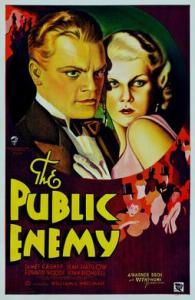Release Date: June 2nd, 1987 (New York City premiere)
Directed by: Brian De Palma
Written by: David Mamet
Based on: The Untouchables by Eliot Ness, Oscar Fraley
Music by: Ennio Morricone
Cast: Kevin Costner, Charles Martin Smith, Andy Garcia, Robert De Niro, Sean Connery, Billy Drago, Patricia Clarkson, Brad Sullivan, Clifton James (uncredited)
Paramount Pictures, 119 Minutes
 Review:
Review:
“You just fulfilled the first rule of law enforcement: make sure when your shift is over you go home alive. Here endeth the lesson.” – Malone
While this isn’t one of my favorite Brian De Palma movies, it was one of my favorite mob movies back when I was a teenager. As a De Palma picture, though, it’s stylistically very different than his other films, especially those that came before it.
Don’t get me wrong, though, I still love the hell out of this movie.
The Untouchables is full of great actors giving solid performances and telling a really compelling and tragic story, as many of the heroes die very violently while trying to bring one of America’s most violent criminals to justice.
This is a balls out, unapologetic movie that doesn’t shy away from some onscreen carnage and while that’s what made me think this was cool as a teen, it’s actually what makes it so effective and real.
Granted, Robert De Niro’s portrayal of Al Capone is inaccurate, as the real man wasn’t as publicly careless as he appears to be in the film. That’s not De Niro’s fault, that’s the script’s fault but at the same time, I don’t mind it, as it is used artistically to convey who Capone was beyond the public facade.
I love the camaraderie between the four heroes in this film, as they all felt truly chummy and it transcended the picture and made their sacrifices come across as even more genuine. You feel it in your gut when Sean Connery is gunned down and it doesn’t really matter how many times one has seen this picture.
The real standout in the cast to me is Billy Drago, who plays Frank Nitti, the sadistic and blatantly evil henchman of Capone. Drago has been a favorite actor of mine since he played the villain, John Bly, in the grossly underappreciated television series The Adventures of Brisco County Jr. Since then, I’ve taken note of everything Drago has been in but then, he’s really hard to miss. Drago takes control of every scene he’s ever been in and can convey chilling villainy like no other actor. That being said, this is probably his greatest and most prolific role.
The movie also has a really unique score, composed by the legendary Ennio Morricone. Even for Morricone, it’s a strange soundtrack while also still sounding like his patented style. I like that this movie allowed Morricone to experiment in a way that he couldn’t when he was doing spaghetti westerns and Italian dramas.
The Untouchables holds up pretty well. It’s not a run of the mill, typical gangster picture. It certainly feels like it’s own thing and I feel like that’s why it still stands out, years later. While I can’t consider it as great as De Palma’s Scarface, Coppola’s Godfather movies or Scorsese’s Goodfellas, it’s still in the upper echelon of the genre.
Rating: 8.5/10
Pairs well with: other Brian De Palma crime films, as well as other Robert De Niro starring crime flicks.

 This is the fourth book out of the twelve in the original Indiana Jones novel series from the ’90s. This is also my least favorite of the books so far.
This is the fourth book out of the twelve in the original Indiana Jones novel series from the ’90s. This is also my least favorite of the books so far. Review:
Review: Review:
Review:
You must be logged in to post a comment.